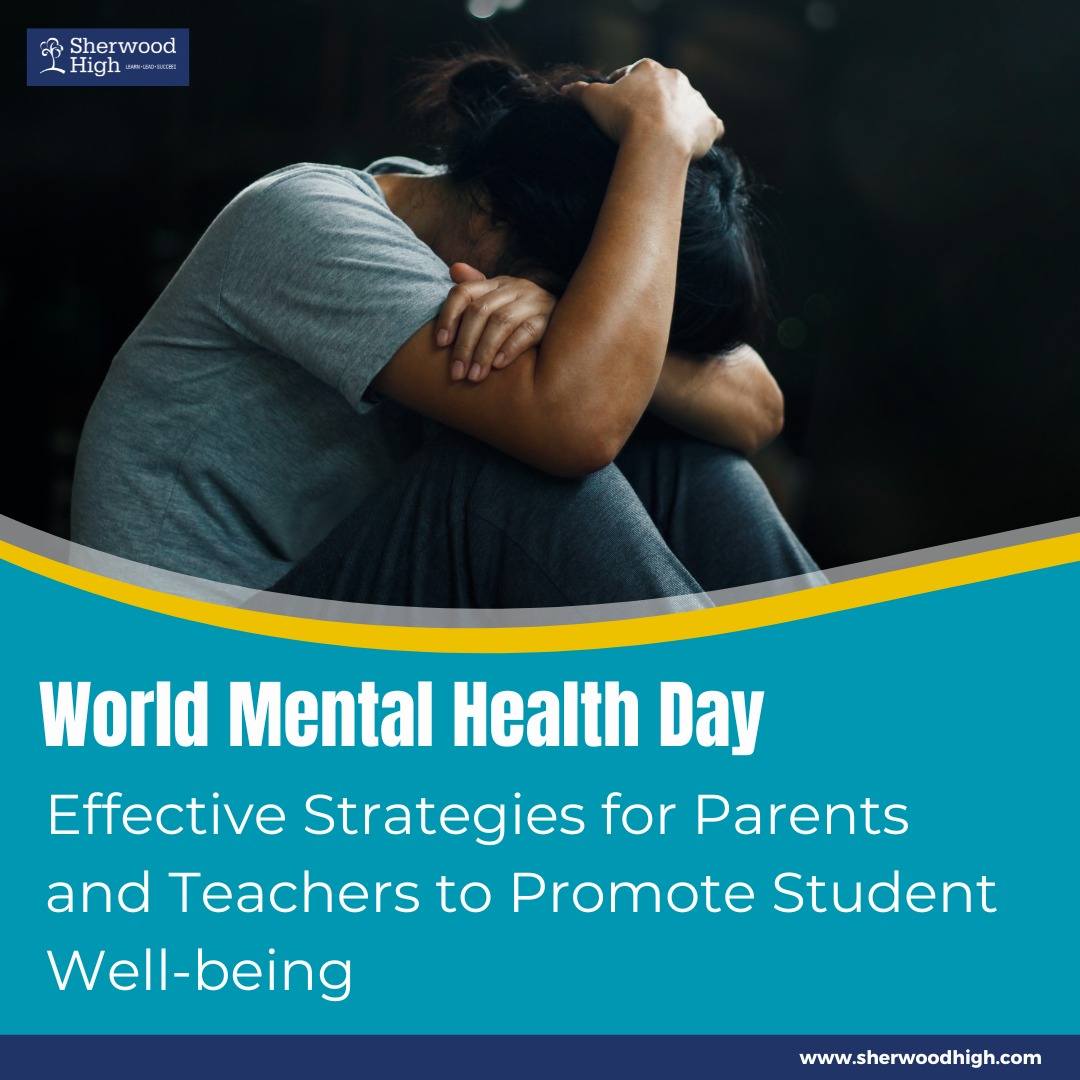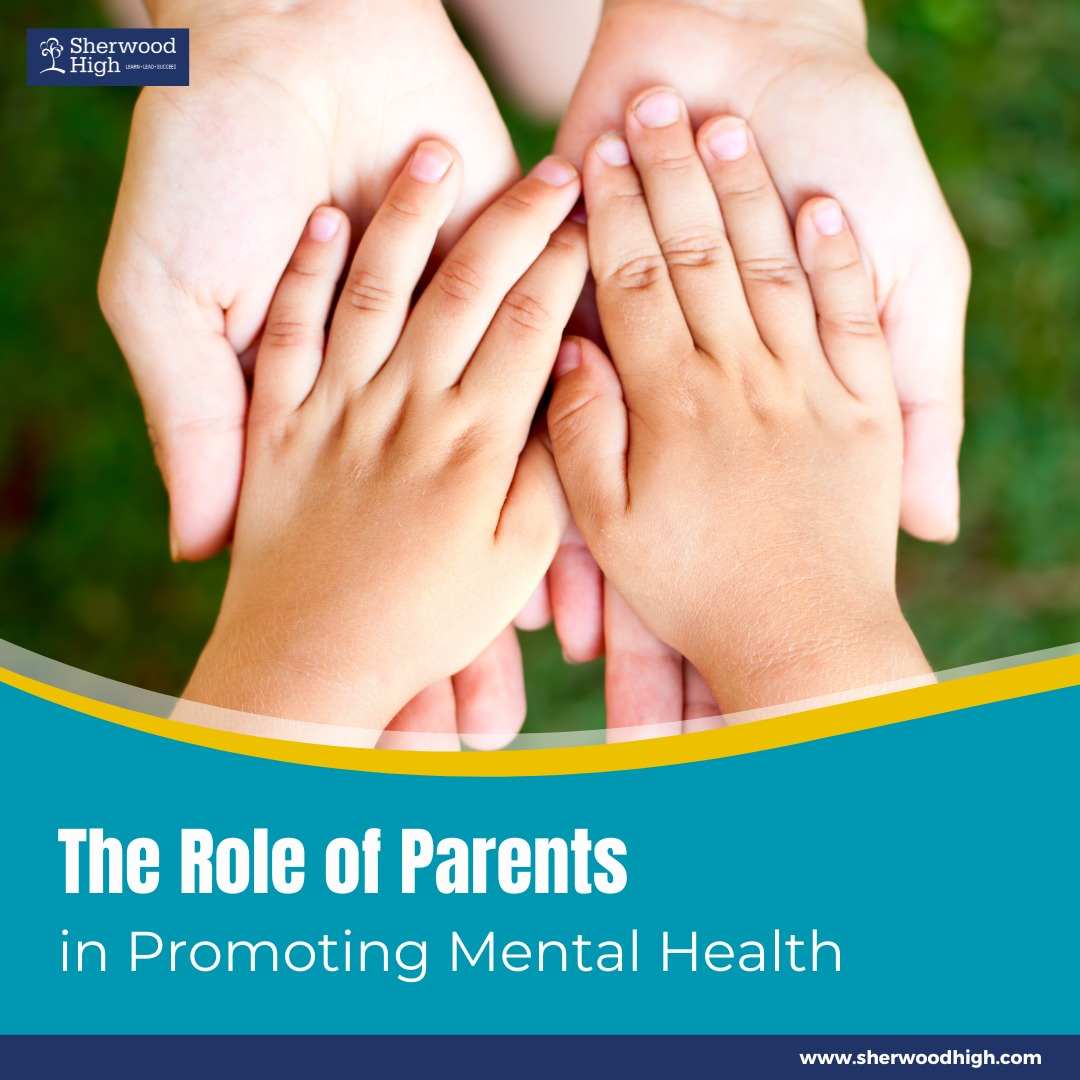
World Mental Health Day: Effective Strategies for Parents and Teachers to Promote Student Well-being
World Mental Health Day: Effective Strategies for Parents and Teachers to Promote Student Well-being
Understanding Student Mental Health

Before diving into strategies, it is important to understand why student mental health has become a significant concern. According to the World health organization (WHO) one in seven, 10- to 19-year-olds experiences a mental disorder globally. This issue is often exacerbated by social stigma, a lack of awareness, and inadequate mental health services in schools and communities. Parents and teachers must collaborate to address these challenges.
According to Healthy Minds Study on 373 campuses, more than 60% of college students met the criteria for at least one mental health challenge during the 2020–2021 school year.
Why Mental Health in Schools Is Critical

Remember, schools are more than academic institutions. They are places where students spend most of their waking hours, making it a prime environment to address their mental well-being. Teachers are often the first to notice changes in a student’s behavior, making them crucial players in early detection and intervention.
World Mental Health Day is a powerful reminder for schools to take actionable steps toward creating an atmosphere that prioritizes mental health. Initiatives such as mindfulness programs, regular mental health check-ins, and peer support systems can make a world of difference. Schools like Sherwood High, known for their proactive approach to well-being, have already implemented strategies that encourage open discussions about mental health, ensuring students feel heard and supported.
The Role of Parents in Promoting Mental Health

While schools provide an essential framework for promoting mental health, parents are equally important in ensuring the emotional and mental well-being of their children. Parents often serve as the first line of defense against mental health issues, and their involvement can significantly impact a child’s resilience to stressors.
Here are a few practical ways parents can support their child’s mental health:
- Open Communication:
Foster an environment where children feel safe discussing their feelings. When students know they can express their thoughts without judgment, they are more likely to open about their struggles. - Create Routine and Structure:
Students thrive in environments that offer predictability. A stable home environment with consistent routines can reduce anxiety and provide a sense of security. - Encourage a Balanced Lifestyle:
Physical health is closely tied to mental well-being. Encourage regular exercise, a healthy diet, and adequate sleep to help your child maintain both mental and physical wellness. - Stay Informed:
Stay up to date with the latest research and news on mental health. Understanding common mental health issues can equip parents with the tools to recognize early warning signs. - Collaborate with Teachers:
Maintain an open line of communication with your child’s school and teachers. Sharing insights on your child’s home life can provide teachers with a more holistic view of their mental health.
Parents play an invaluable role in fostering resilience in children. Research shows that children who have strong emotional support from parents are better equipped to handle stress and anxiety in academic settings.
The Role of Teachers in Promoting Mental Health
Let us first just get the most basic fact out of the way. Teachers are not just educators. They are role models, mentors, and sometimes even counselors. With the growing prevalence of mental health challenges among students, teachers need to be equipped with strategies to support their students beyond academics. Here are some actionable steps teachers can take to promote mental health in schools:
- Create a Safe Learning Environment:
Ensure your classroom is a space where students feel comfortable expressing themselves. Establish clear anti-bullying policies and promote kindness, empathy, and respect among students. - Incorporate Mental Health Education:
Integrate lessons about mental health into the curriculum. Students should learn about mental health as part of their overall education, just like any other subject. - Identify Early Warning Signs:
Teachers are often the first to notice changes in student behavior. Look out for signs like changes in academic performance, social withdrawal, or sudden mood swings, which could indicate mental health struggles. - Promote Mindfulness Practices:
Schools like Sherwood High have integrated mindfulness programs into the school day, which allow students to manage stress and anxiety. These programs can be as simple as a five-minute guided meditation or breathing exercise - Offer Support Resources:
Provide students with information about counseling services, helplines, or peer support programs available at school. Ensure that they know how and where to seek help.
Effective Strategies for Parents and Teachers to Promote Student Well-Being
- Collaboration Between Parents and Teachers:
One of the most effective ways to promote student well-being is through a collaborative approach between parents and teachers. Regular meetings between both parties help create a consistent support system for the student, ensuring their emotional and academic needs are met at home and in school. - Promote:
Emotional intelligence is the ability to understand and manage one’s own emotions, as well as the emotions of others. Both parents and teachers can encourage students to express their feelings openly and provide them with tools to cope with emotional challenges. For example, parents can model emotional intelligence by sharing how they manage stress and frustration, while teachers can create classroom activities that promote self-awareness and empathy. - Implement Mental Health Days:
Schools and parents can agree on allowing “mental health days” for students who feel overwhelmed by academic and social pressures. These days give students the time they need to recharge and return to school with a fresh mindset. - Develop Healthy Coping Mechanisms:
Both parents and teachers should help students develop healthy coping mechanisms for stress, anxiety, and other emotional challenges. Teaching mindfulness techniques, encouraging hobbies, or simply offering a listening ear can make a significant difference in how students handle life’s ups and downs. - Encourage Peer Support Systems:
Peer support systems can be incredibly beneficial in promoting mental health. Programs that pair students with peer mentors or buddy systems provide opportunities for students to share their experiences and feelings with someone who may understand their struggles. - Support Individual Needs:
Every student is different, and so are their mental health needs. Both parents and teachers need to recognize the uniqueness of each student and provide tailored support. This might mean offering extra academic help for a student struggling with anxiety over schoolwork or giving a student space to process difficult emotions. - Limit Academic Pressure:
While academic achievement is important, it is essential to create a balanced approach to learning. Excessive academic pressure can lead to burnout, stress, and anxiety. Schools should focus on the overall development of students, promoting both emotional and intellectual growth. Parents can support this by not over emphasizing grades but instead encouraging effort, curiosity, and creativity.
Promoting Well-Being at Sherwood High
Sherwood High serves as a model for how schools can take proactive measures to promote student well-being. The school has implemented several initiatives that prioritize mental health, including a dedicated team of counselors, a student-led mental health awareness club, and regular well-being workshops for both students and parents.
Sherwood High holistic approach ensures that students’ emotional well-being is just as important as their academic success.
World Mental Health Day: A Call to Action
World Mental Health Day provides a global platform to discuss mental health openly, but it is important to remember that promoting well-being is a year-round effort. Parents and teachers are the backbone of a student’s support system and play an instrumental role in shaping their mental health. Through collaboration, emotional intelligence, mindfulness, and a focus on individualized care, we can create a healthier environment where students thrive both academically and emotionally.
By acting on World Mental Health and beyond, parents and teachers can ensure that student well-being becomes a top priority, setting the foundation for healthier, happier lives for years to come.
Bottomline
Promoting student mental health is a shared responsibility between parents and teachers. With the right strategies in place, such as creating open communication, fostering emotional intelligence, and promoting balance between academic and emotional needs, we can ensure students develop the tools necessary for lifelong well-being.
As World Mental Health Day approaches, let us commit to making student well-being a priority, ensuring every child has the support they need to succeed both in school and in life.
This year let us make mental health a year-round focus, not just a conversation for one day. Through sustained effort and collaboration, we can positively impact the mental health and well-being of students everywhere.






